- Jul 09, 2020
 0
0- by A2 CMS Team
Joomla! is one of the top three Content Management Systems (CMSs) on the market right now. You might have heard that it has certain advantages over Drupal and WordPress, the other two big fish in the CMS ‘sea’. However, Joomla! can seem a bit complicated to get started with.
Fortunately, there are many tools and tutorials to guide you through the process of learning this particular CMS, and to help you decide if it’s the right fit for you. You can even try out Joomla! without making any commitments or purchases. What’s more, you’ll find that it’s both a beginner-friendly and powerful option for building your website.
In this article we’ll go over Joomla’s history, discuss how to decide whether it fits your needs, and walk you through the steps you can take to launch your first Joomla! website. Let’s jump right in!
A Brief History of Joomla!
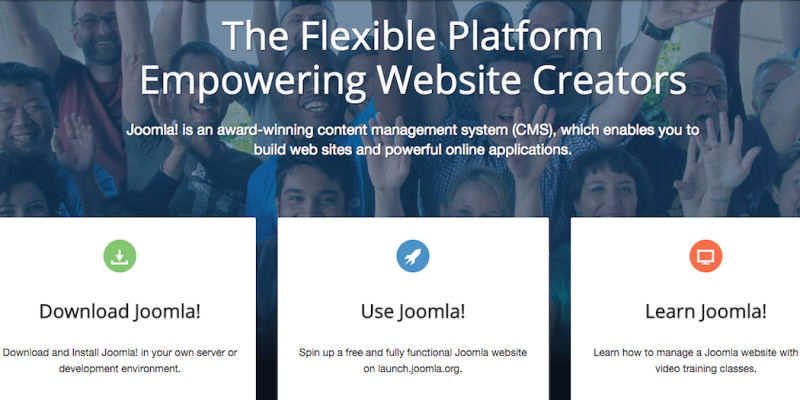
Joomla! started as an offshoot of Mambo, an open-source CMS (i.e. a platform that enables you to create content and publish it online). The team that would go on to create Joomla! felt that parts of the new structure went against the principles of open-source, so forked Mambo to develop their own CMS.
Therefore, the team launched Joomla! in 2005, as an already fully-developed CMS, with a dedicated community supporting it. Although its user base is small when compared to a giant like WordPress, it’s still the second-most popular CMS, and there are over 2 million active Joomla! websites online.
The Pros and Cons of Using Joomla! for Your Website
Today, Joomla! is a complex and flexible CMS capable of creating sites with plenty of advanced features. At the same time, it’s still relatively easy for beginners to pick up. It occupies a middle ground between WordPress and Drupal when it comes to both functionality and ease of use.
Along with the basics, such as enabling you to create a website full of multimedia content, some of Joomla!’s unique features include:
- Portals: You can create advanced user portals, such as for medical institutions or use in sales.
- Advanced e-commerce: You’ll be able to integrate useful e-commerce functions, such as customer accounts, directly into your website
- Directories: Joomla! streamlines the process of creating complex directories, such as this film festival website with multiple ways to search and filter its films.
However, the platform also has some drawbacks. The learning curve is a bit steeper than with WordPress or a website builder, for example. If you’re new to website design, and you want to implement complex functionality, you may end up needing to hire a web developer. Also, the Joomla! community is somewhat small, which means it has fewer ready-made tools available than WordPress does. Again, this means you may end up needing to hire a web developer to build you some custom solutions.
Joomla! is ideal for websites that need the advanced features it offers, and have the budget for a web developer to get the ball rolling. Once the features you want are in place, you can easily learn how to update and add content yourself. Of course, if you’re dedicated, you can also learn to use Joomla! effectively yourself (without needing to hire outside help).
How to Get Started with Joomla! (In 4 Steps)
If you’re interested in trying out Joomla!, the first thing you’ll need to do is set up your website. Let’s walk though how to do that in just four steps.
Step 1: Purchase a Hosting Plan and Domain Name
Joomla! provides practically all of the tools you’ll need to build your site, but you’ll still need a place to host it online. If you’re not ready to make that commitment yet, you can try out a free 24-hour Joomla! demo to see for yourself how the software works – and whether you feel comfortable with it.
You’ll also need to purchase a hosting plan for your new site:
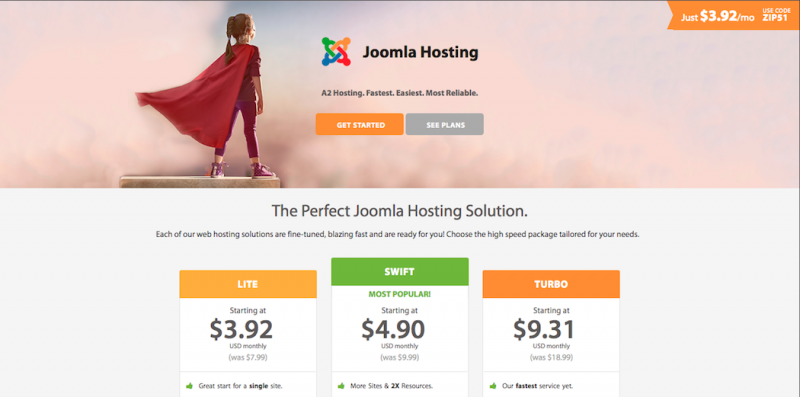
As a beginner, it’s best to pick your hosting provider carefully. Installing a CMS manually can be somewhat complicated. You can avoid having to do this by opting for a hosting plan that supports Joomla!, and offers an easy-installation option.
In addition, you’ll also need to secure a domain name. You can purchase a new name, use a free subdomain, or even transfer a domain name you already own.
Once you have your hosting and domain in place, you can get your site up and running. Exactly how you do that will depend on your chosen host. If you opt for an A2 Hosting plan, Joomla! will be pre-installed and configured for optimal speed. That means you can start designing your site immediately!
Step 2: Choose a Template for Your Site
Once you have a home for your site, you can start making changes and adding content. The best way to learn this platform is to plunge right in and start experimenting. You can set up your site using a default template, and update text and images from there to customize it further.
First, log into your site’s admin area. Under Configuration in the left-hand menu, select Templates. On the next page, you’ll see a small selection of default templates:
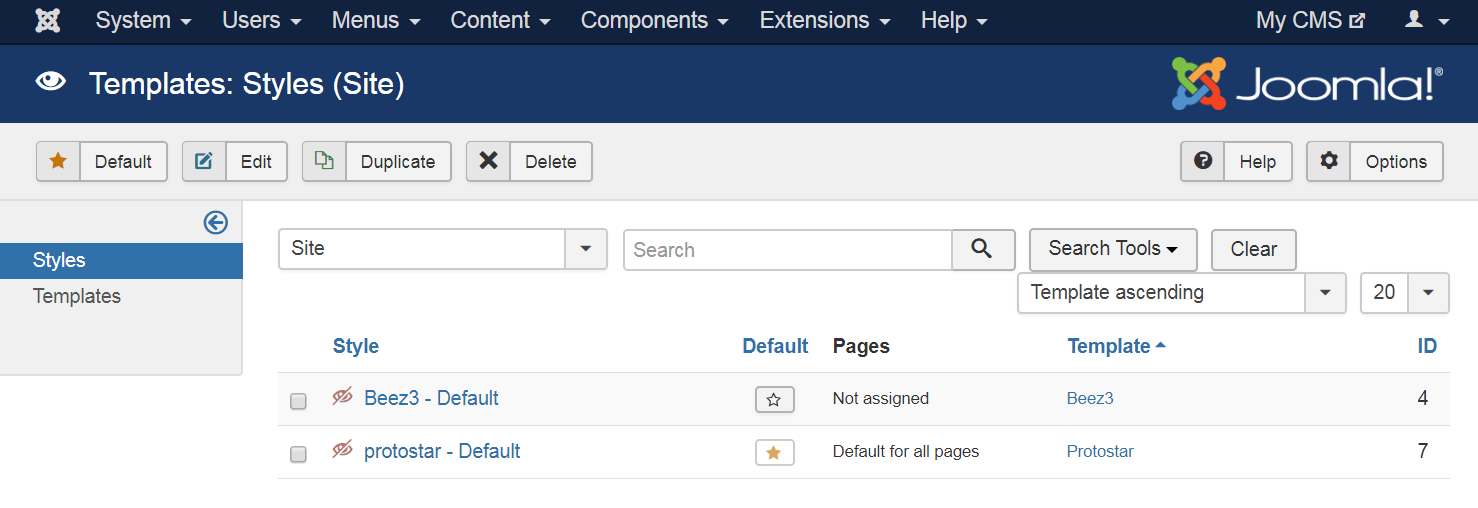
Simply select the star icon next to a template’s name, in order to make it active on your site. You can always change this selection later, and you can download additional options from the Joomla website and other directories online.
Step 3: Install Extensions to Customize Your Site
Extensions are what really sets Joomla! apart from other CMSs. This platform offers a wide array of these add-ons, which can be installed on your site to provide you with new features and options. Extensions enable you to do practically anything, such as creating a forum or managing user profiles.
You can explore Joomla!’s extension library to see many of the possibilities. To add an extension to your site, go to Extensions > Manage in your dashboard. Click on the Install from Web button. Then you can search for any extension you like, using the search feature or the list of categories:
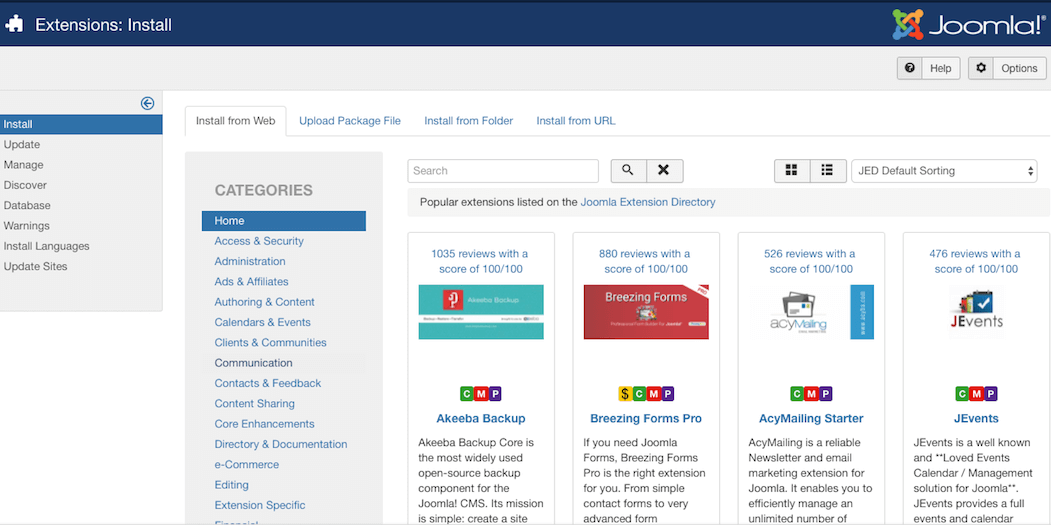
When you find an extension you want to use, click on it for more information. Then select the green Install button to add it to your site. You’ll be asked to confirm the installation, and Joomla! will get it up and running right away.
Step 4: Get in Touch with the Community
As you continue to work on your new Joomla site, you’re likely to have plenty of questions. Fortunately, the Joomla! forum is an excellent resource for basic support:
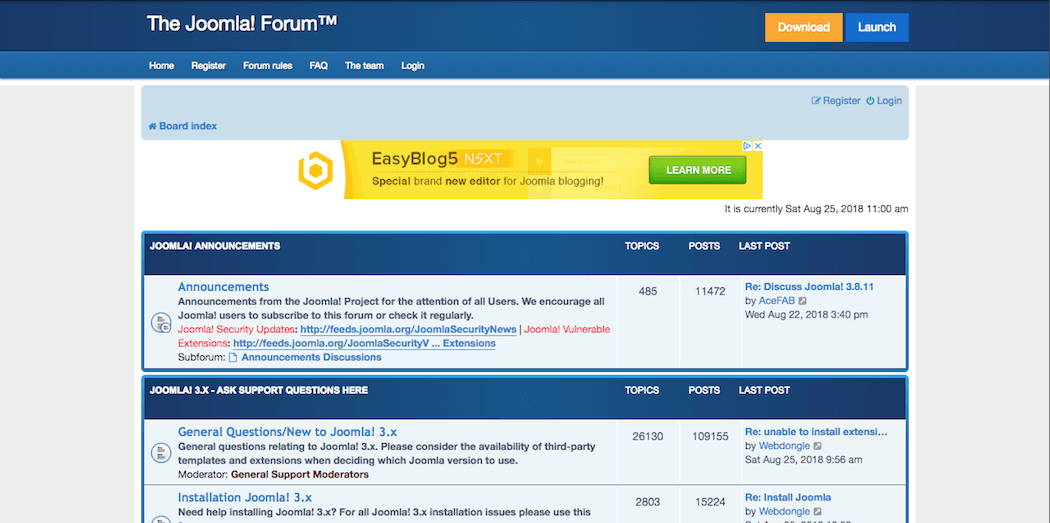
You can also search Joomla!’s tutorials for answers to specific questions, as well as how-to guides. If you find yourself in over your head at any point, you can also consider hiring a programmer, or perhaps taking a class. The more you use Joomla!, the easier it should get. It’s okay to need some help, however, especially in the beginning.
Joomla Conclusion
Joomla! is a powerful platform, which is nonetheless fairly intuitive to use. Setting up a basic site and creating some content can be a quick process. Some of the platform’s more advanced features can get complex, but there are many online tools and resources to help you move past the basics.
To build your first site using Joomla, you’ll want to:
- Purchase a hosting plan with Joomla! pre-installed (as well as a domain name).
- Use a default template for a quick launch.
- Add extensions to grow and customize your site.
- Reach out for help as needed.
Image credit: Pexels.










